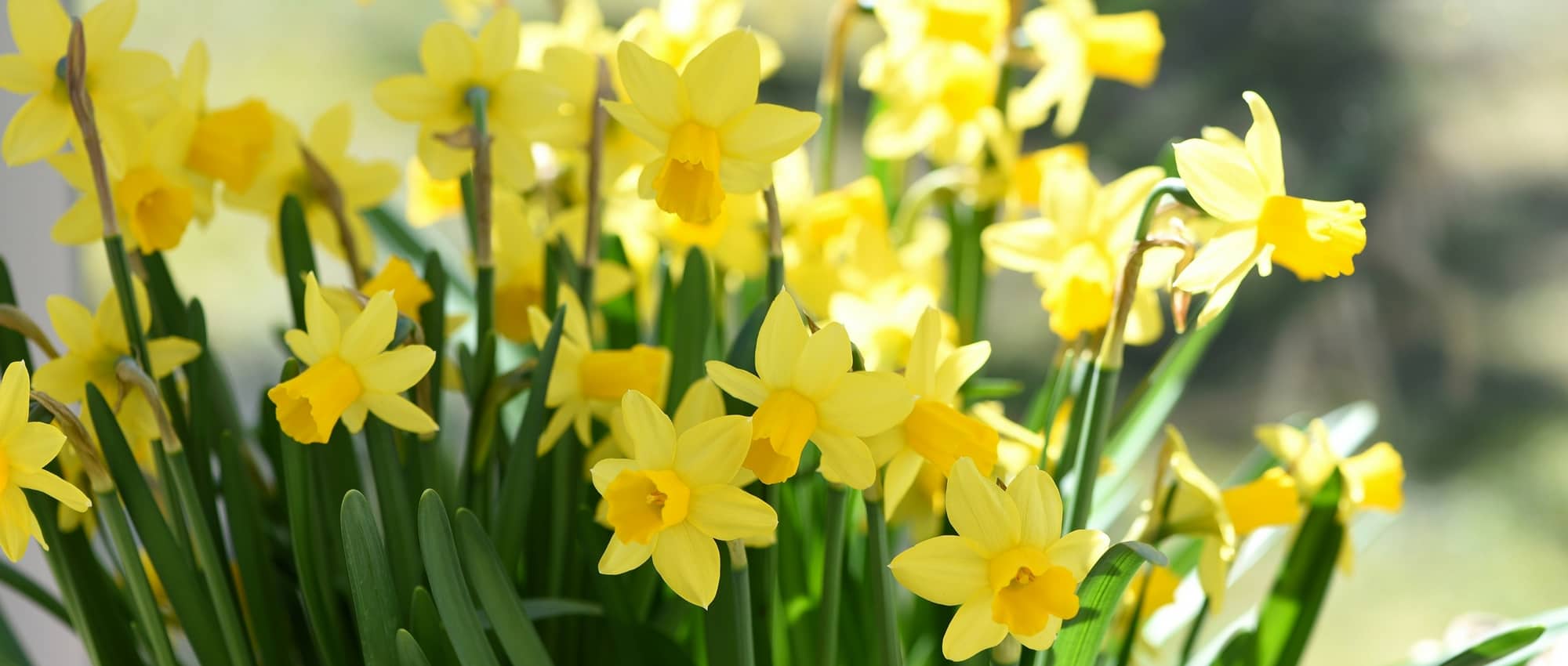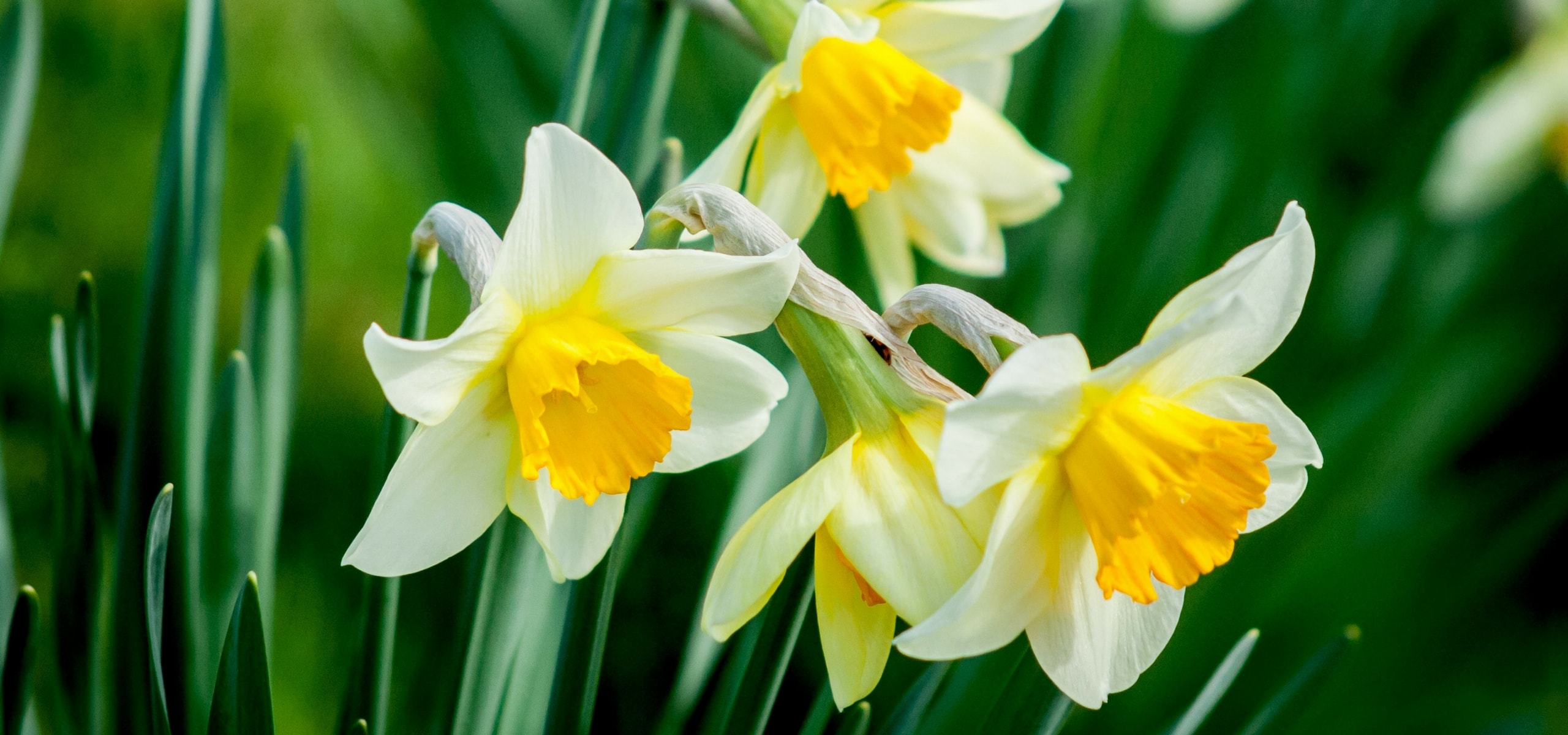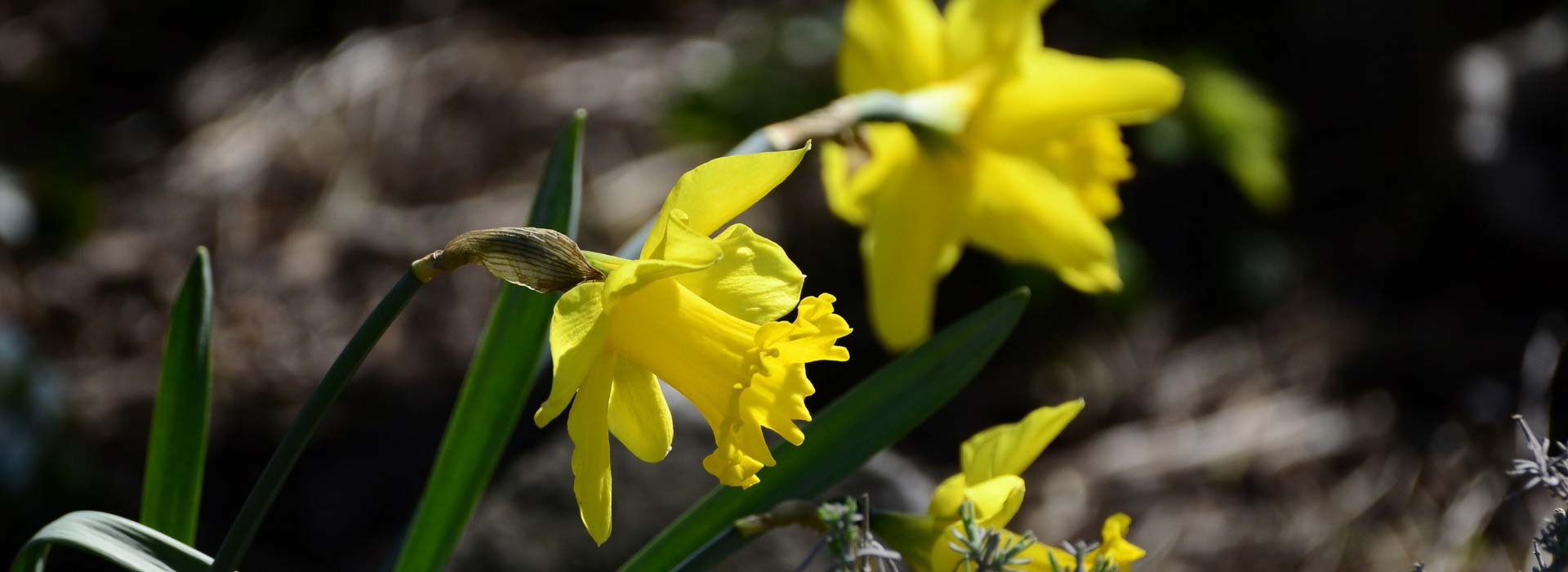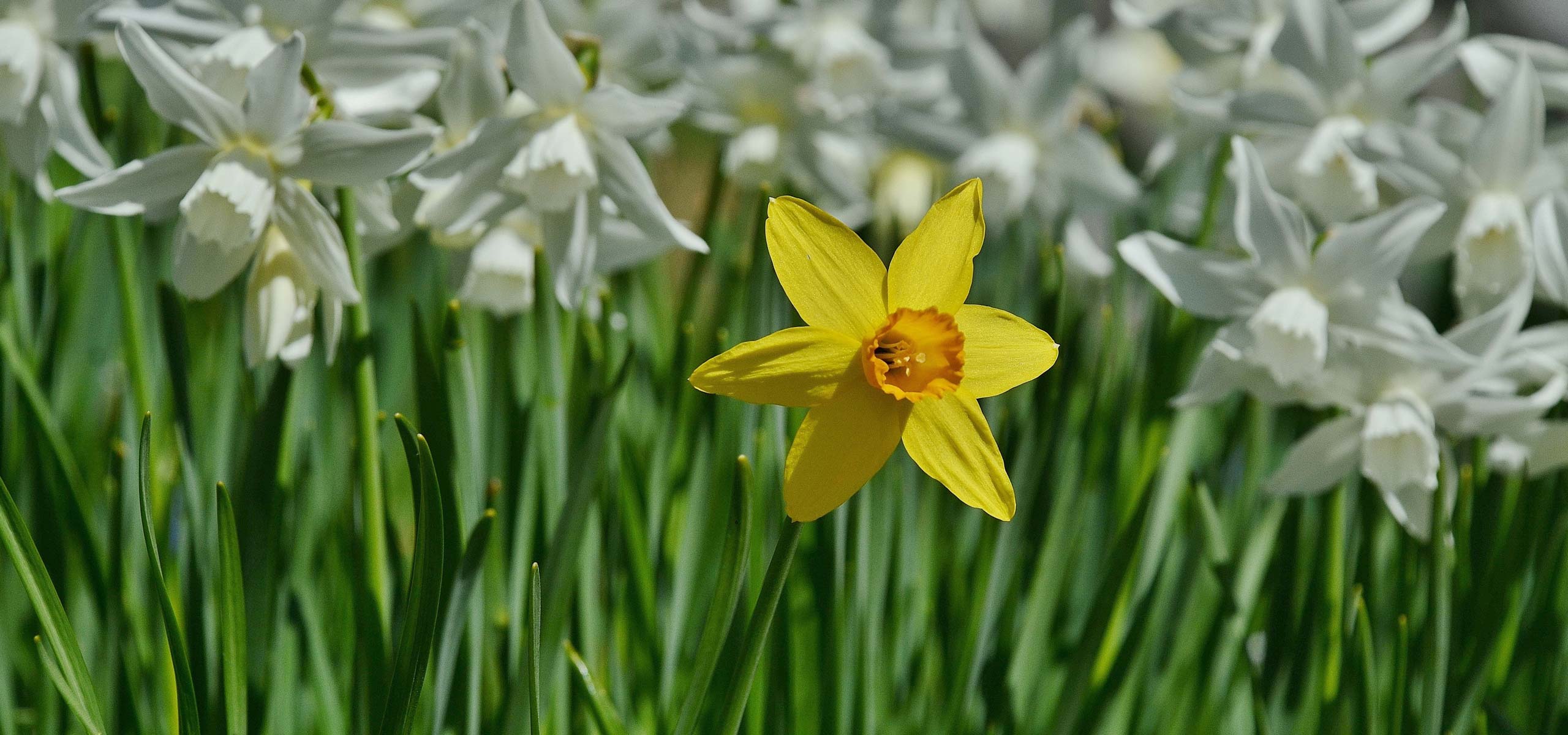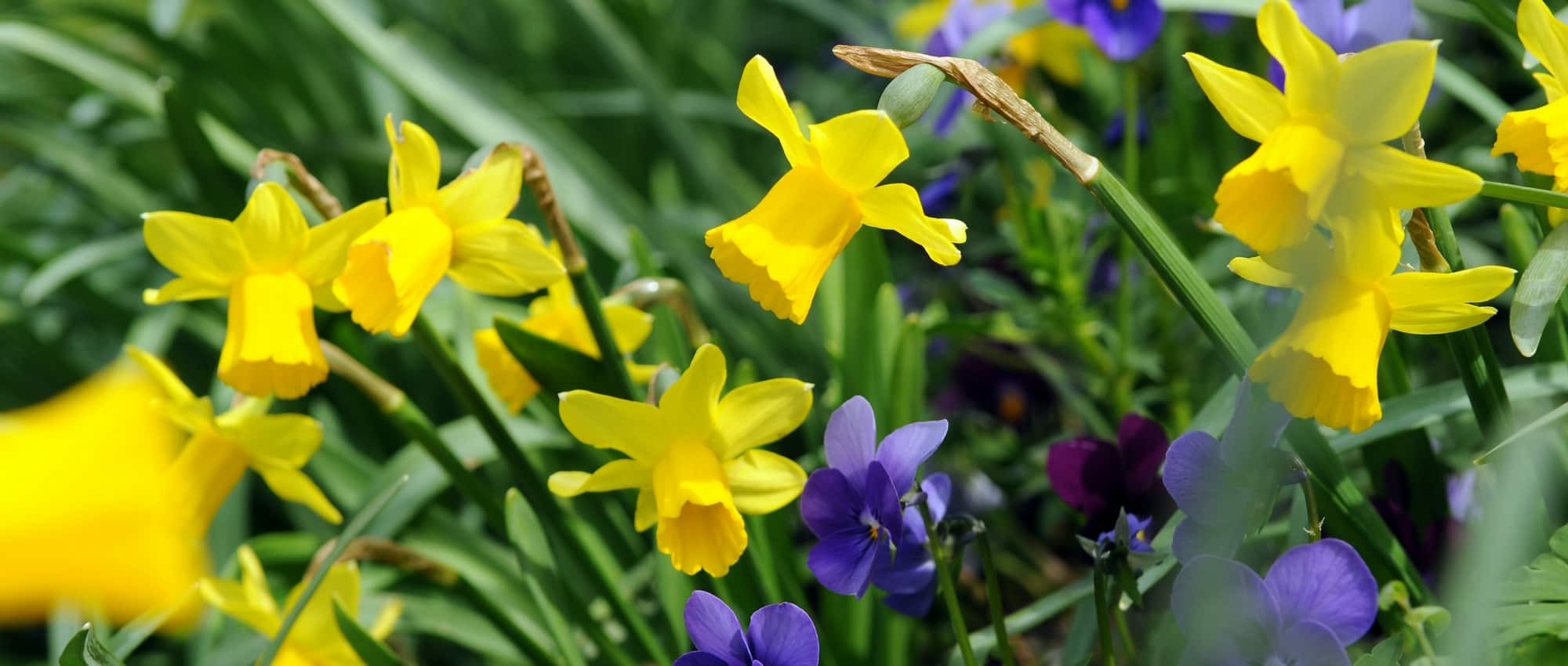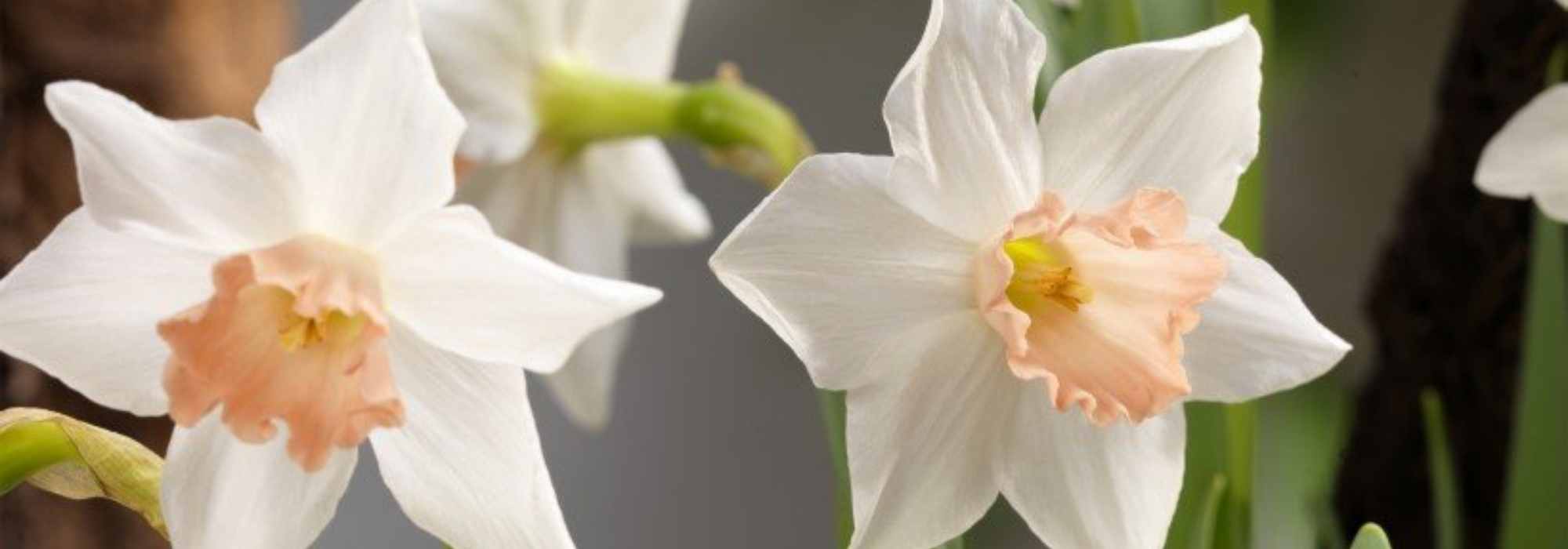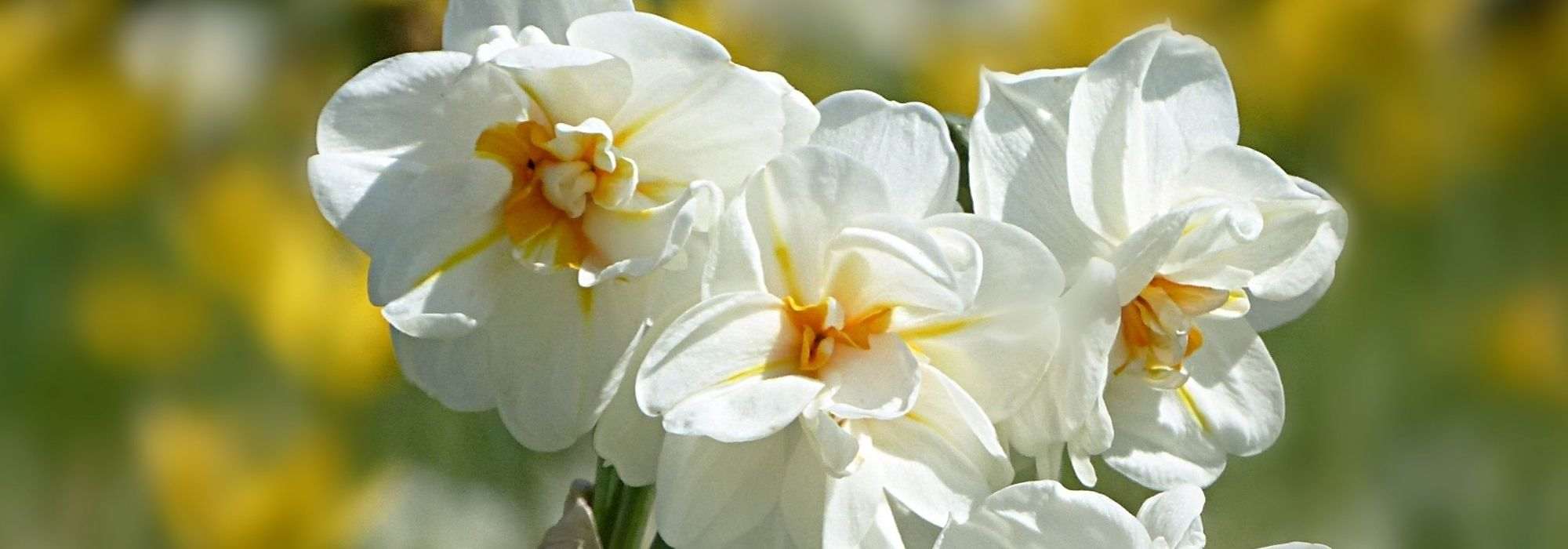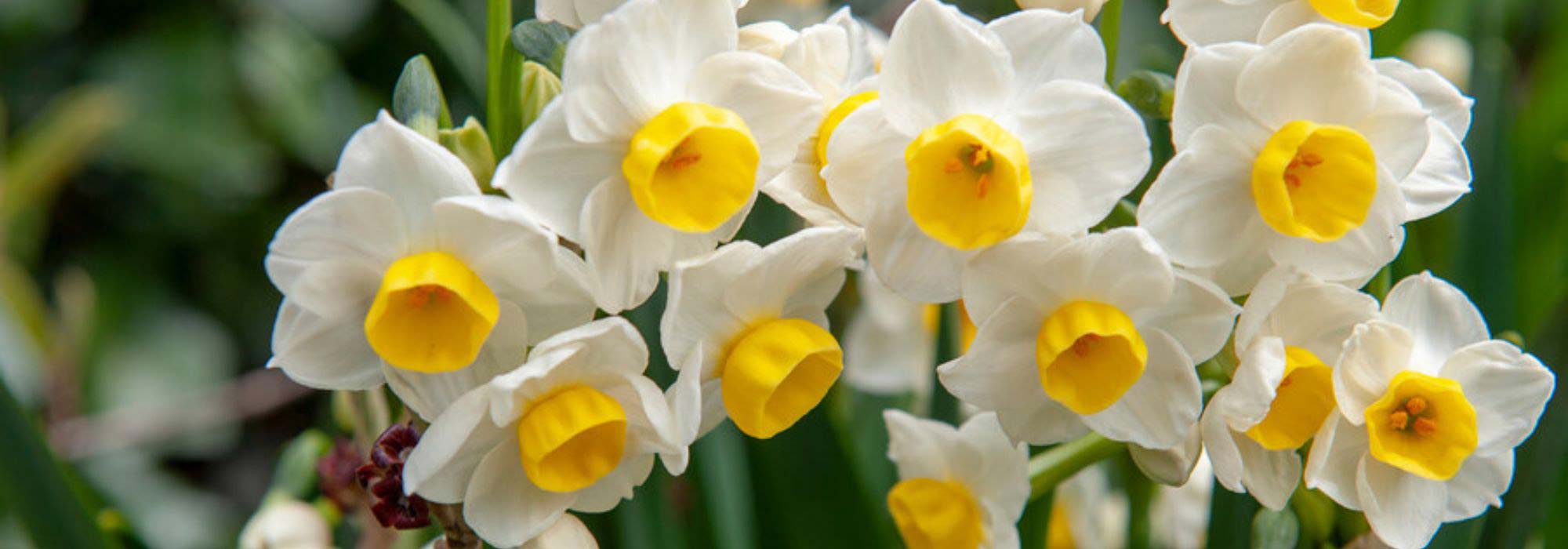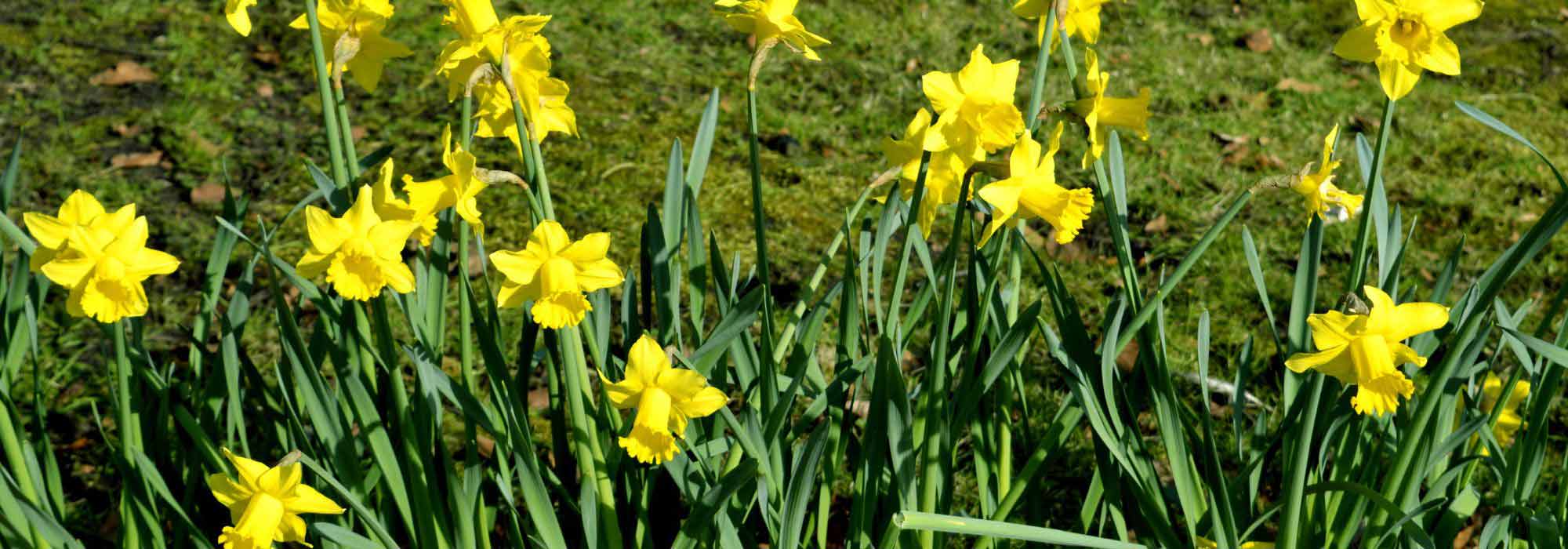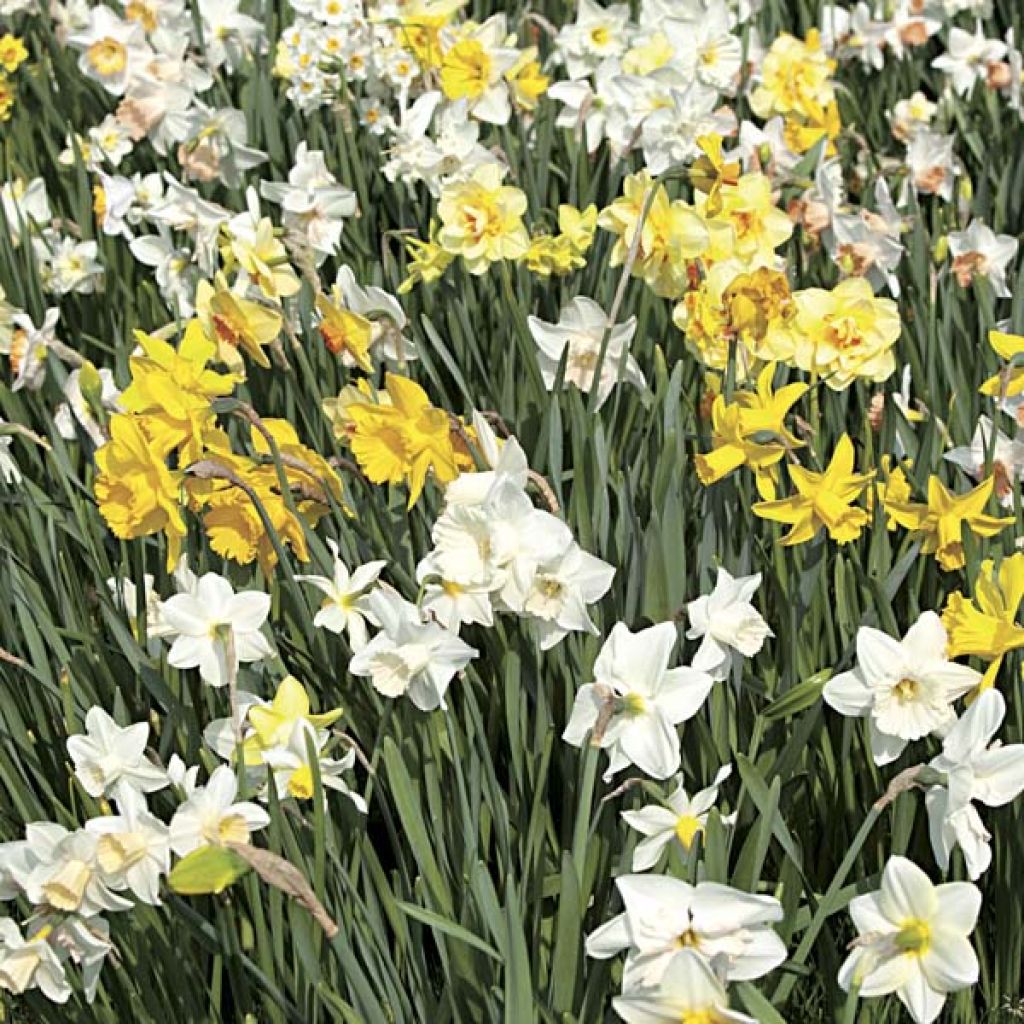

Narcisses Sélection Schryve
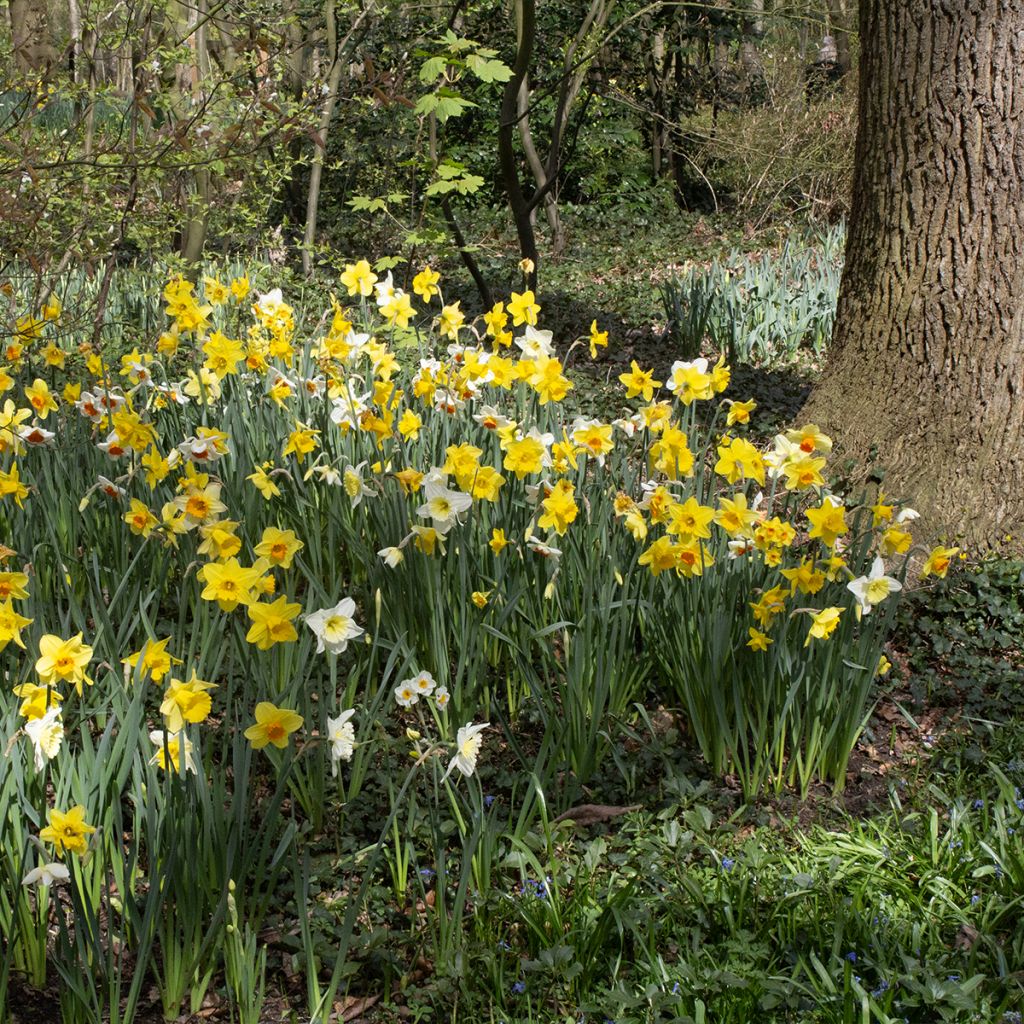

Narcissus
Narcissus
Narcissus
Daffodil, Narcissus, Jonquil
Beautiful and long flowering. Planted around a Malus Everest and accompanied by Triomphe Spryng tulips, a very cheerful effect (for a green space in our small village).
Julia, 28/04/2023
Special offer!
Receive a €20 voucher for any order over €90 (excluding delivery costs, credit notes, and plastic-free options)!
1- Add your favorite plants to your cart.
2- Once you have reached €90, confirm your order (you can even choose the delivery date!).
3- As soon as your order is shipped, you will receive an email containing your voucher code, valid for 3 months (90 days).
Your voucher is unique and can only be used once, for any order with a minimum value of €20, excluding delivery costs.
Can be combined with other current offers, non-divisible and non-refundable.
This plant carries a 6 months recovery warranty
More information
We guarantee the quality of our plants for a full growing cycle, and will replace at our expense any plant that fails to recover under normal climatic and planting conditions.

Does this plant fit my garden?
Set up your Plantfit profile →
Description
We have composed for you a real assortment of high-quality narcissus bulbs, carefully chosen from the best varieties, at a price suitable for mass planting. They come in all shades, from white to yellow, pink, and orange, some with multiple flowers, occasionally scented, with single or even double blooms. Their flowering creates masses of flowers for several weeks. Easy to cultivate and naturalize, hardy narcissus bulbs come back every year, multiplying in number. They are stunning in borders and spectacular in spring bouquets!
The narcissus (or daffodil) belongs to the lily family (Amaryllidaceae). The genus Narcissus includes around 50 species found mainly in the western Mediterranean, but also in Africa and Asia. The Royal Horticultural Society (RHS) has classified the varieties into 13 divisions based on flower shape, particularly the size of the corolla or "trumpet" in relation to the length of the petals, the number of flowers per stem, the flowering period, and partly based on genetic criteria.
The plants in our selection produce flower stems that are 30 to 45cm (12 to 18in) tall, depending on the varieties, and bloom from late February for the earliest ones to early May for the latest ones. Their large yellow-green flower bud opens into beautiful flowers with various shapes and colours. The flowers, single or double, are always composed of petal-like tepals forming a corolla of variable colour, with an inserted cup-shaped paracorolla that also varies in colour depending on the variety. The linear, slightly glaucous foliage disappears in summer and reappears at the end of winter.
There is such a wide choice of narcissus varieties that you can enjoy them for three months in spring without ever getting tired. They all have in common the ability to naturalize easily, a wide range of yellow and white colours, and often emit a sweet fragrance. These are all reasons to grow them in large clumps in a short grass meadow or along the edge of a border (at least 20 bulbs) for a multiplied effect. Combine narcissus bulbs, in wild or romantic borders, with Scillas and hyacinths, accompany them with double tulips, as well as forget-me-nots, daisies, chamomiles, or liverworts. A group of narcissus bulbs in a vase creates a sensational effect.
For bouquets: We advise you not to mix narcissus bulbs with other flowers, especially tulips, as the stems of narcissus bulbs contain a substance that causes other flowers to wilt quickly. You can mitigate this detrimental effect on other flower types by dipping the ends of the narcissus stems in hot water for 1 to 2 minutes.
Narcissus bulbs come back every year. Unlike perennial plants, there is no need to fertilize them before flowering. Only cut the leaves when they have turned yellow and provide fertilizer: this is when the bulb replenishes itself and prepares for the next year's flowers.
Narcissus in pictures
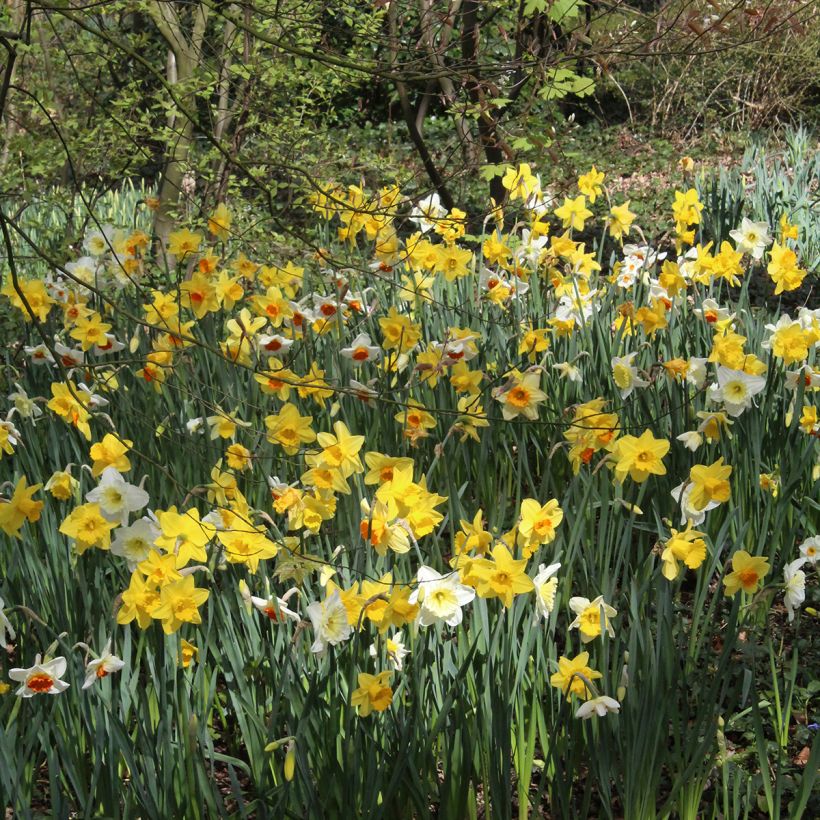

Plant habit
Flowering
Foliage
Botanical data
Narcissus
Amaryllidaceae
Daffodil, Narcissus, Jonquil
Cultivar or hybrid
Planting and care
Daffodils bloom from March to May and come back every year. Very easy to grow, they thrive both in the shade of a wood and in a sunny flowerbed. Plant them at a depth of 10cm (4in) and spaced 10cm (4in) apart. Group them in minimum sets of 5 bulbs, in patches of uniform colours or mixed. You can plant them in the short grass meadow. In this case, lift the grass patch, dig and loosen the soil to a depth of at least 20cm (8in) (the height of a spade). Plant your bulbs, cover with soil and replace the grass. Choose a spot where you won't mow, as it's necessary to let the daffodil leaves wither before cutting them. It's at this moment that the bulb reconstitutes itself and prepares the flowers for the following year. However, remember to cut the flowers as soon as they fade to avoid seed formation. This would unnecessarily exhaust the bulb.
Planting period
Intended location
Care
Planting & care advice
-
, onOrder confirmed
Reply from on Promesse de fleurs
Haven't found what you were looking for?
Hardiness is the lowest winter temperature a plant can endure without suffering serious damage or even dying. However, hardiness is affected by location (a sheltered area, such as a patio), protection (winter cover) and soil type (hardiness is improved by well-drained soil).

Photo Sharing Terms & Conditions
In order to encourage gardeners to interact and share their experiences, Promesse de fleurs offers various media enabling content to be uploaded onto its Site - in particular via the ‘Photo sharing’ module.
The User agrees to refrain from:
- Posting any content that is illegal, prejudicial, insulting, racist, inciteful to hatred, revisionist, contrary to public decency, that infringes on privacy or on the privacy rights of third parties, in particular the publicity rights of persons and goods, intellectual property rights, or the right to privacy.
- Submitting content on behalf of a third party;
- Impersonate the identity of a third party and/or publish any personal information about a third party;
In general, the User undertakes to refrain from any unethical behaviour.
All Content (in particular text, comments, files, images, photos, videos, creative works, etc.), which may be subject to property or intellectual property rights, image or other private rights, shall remain the property of the User, subject to the limited rights granted by the terms of the licence granted by Promesse de fleurs as stated below. Users are at liberty to publish or not to publish such Content on the Site, notably via the ‘Photo Sharing’ facility, and accept that this Content shall be made public and freely accessible, notably on the Internet.
Users further acknowledge, undertake to have ,and guarantee that they hold all necessary rights and permissions to publish such material on the Site, in particular with regard to the legislation in force pertaining to any privacy, property, intellectual property, image, or contractual rights, or rights of any other nature. By publishing such Content on the Site, Users acknowledge accepting full liability as publishers of the Content within the meaning of the law, and grant Promesse de fleurs, free of charge, an inclusive, worldwide licence for the said Content for the entire duration of its publication, including all reproduction, representation, up/downloading, displaying, performing, transmission, and storage rights.
Users also grant permission for their name to be linked to the Content and accept that this link may not always be made available.
By engaging in posting material, Users consent to their Content becoming automatically accessible on the Internet, in particular on other sites and/or blogs and/or web pages of the Promesse de fleurs site, including in particular social pages and the Promesse de fleurs catalogue.
Users may secure the removal of entrusted content free of charge by issuing a simple request via our contact form.
The flowering period indicated on our website applies to countries and regions located in USDA zone 8 (France, the United Kingdom, Ireland, the Netherlands, etc.)
It will vary according to where you live:
- In zones 9 to 10 (Italy, Spain, Greece, etc.), flowering will occur about 2 to 4 weeks earlier.
- In zones 6 to 7 (Germany, Poland, Slovenia, and lower mountainous regions), flowering will be delayed by 2 to 3 weeks.
- In zone 5 (Central Europe, Scandinavia), blooming will be delayed by 3 to 5 weeks.
In temperate climates, pruning of spring-flowering shrubs (forsythia, spireas, etc.) should be done just after flowering.
Pruning of summer-flowering shrubs (Indian Lilac, Perovskia, etc.) can be done in winter or spring.
In cold regions as well as with frost-sensitive plants, avoid pruning too early when severe frosts may still occur.
The planting period indicated on our website applies to countries and regions located in USDA zone 8 (France, United Kingdom, Ireland, Netherlands).
It will vary according to where you live:
- In Mediterranean zones (Marseille, Madrid, Milan, etc.), autumn and winter are the best planting periods.
- In continental zones (Strasbourg, Munich, Vienna, etc.), delay planting by 2 to 3 weeks in spring and bring it forward by 2 to 4 weeks in autumn.
- In mountainous regions (the Alps, Pyrenees, Carpathians, etc.), it is best to plant in late spring (May-June) or late summer (August-September).
The harvesting period indicated on our website applies to countries and regions in USDA zone 8 (France, England, Ireland, the Netherlands).
In colder areas (Scandinavia, Poland, Austria...) fruit and vegetable harvests are likely to be delayed by 3-4 weeks.
In warmer areas (Italy, Spain, Greece, etc.), harvesting will probably take place earlier, depending on weather conditions.
The sowing periods indicated on our website apply to countries and regions within USDA Zone 8 (France, UK, Ireland, Netherlands).
In colder areas (Scandinavia, Poland, Austria...), delay any outdoor sowing by 3-4 weeks, or sow under glass.
In warmer climes (Italy, Spain, Greece, etc.), bring outdoor sowing forward by a few weeks.






























